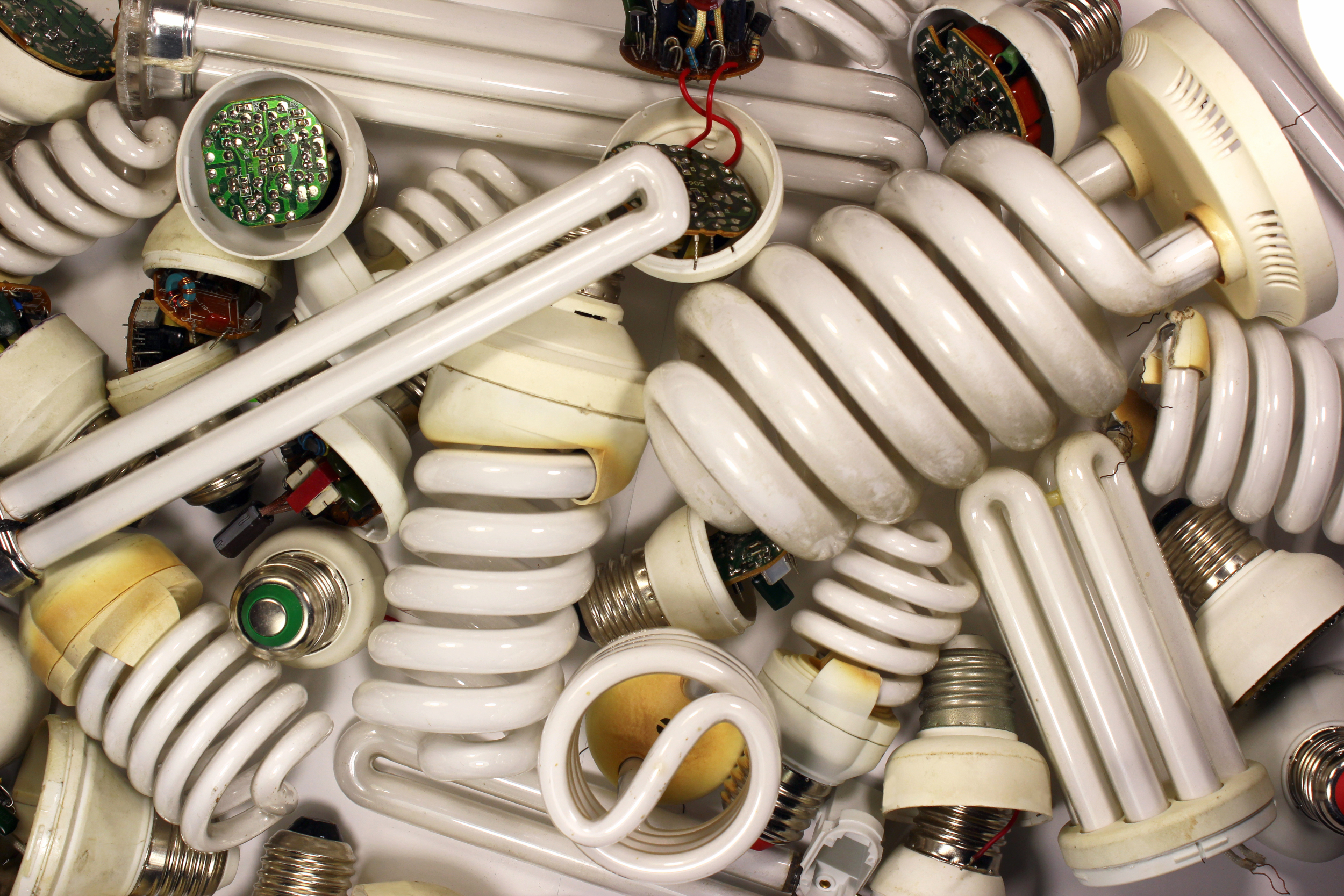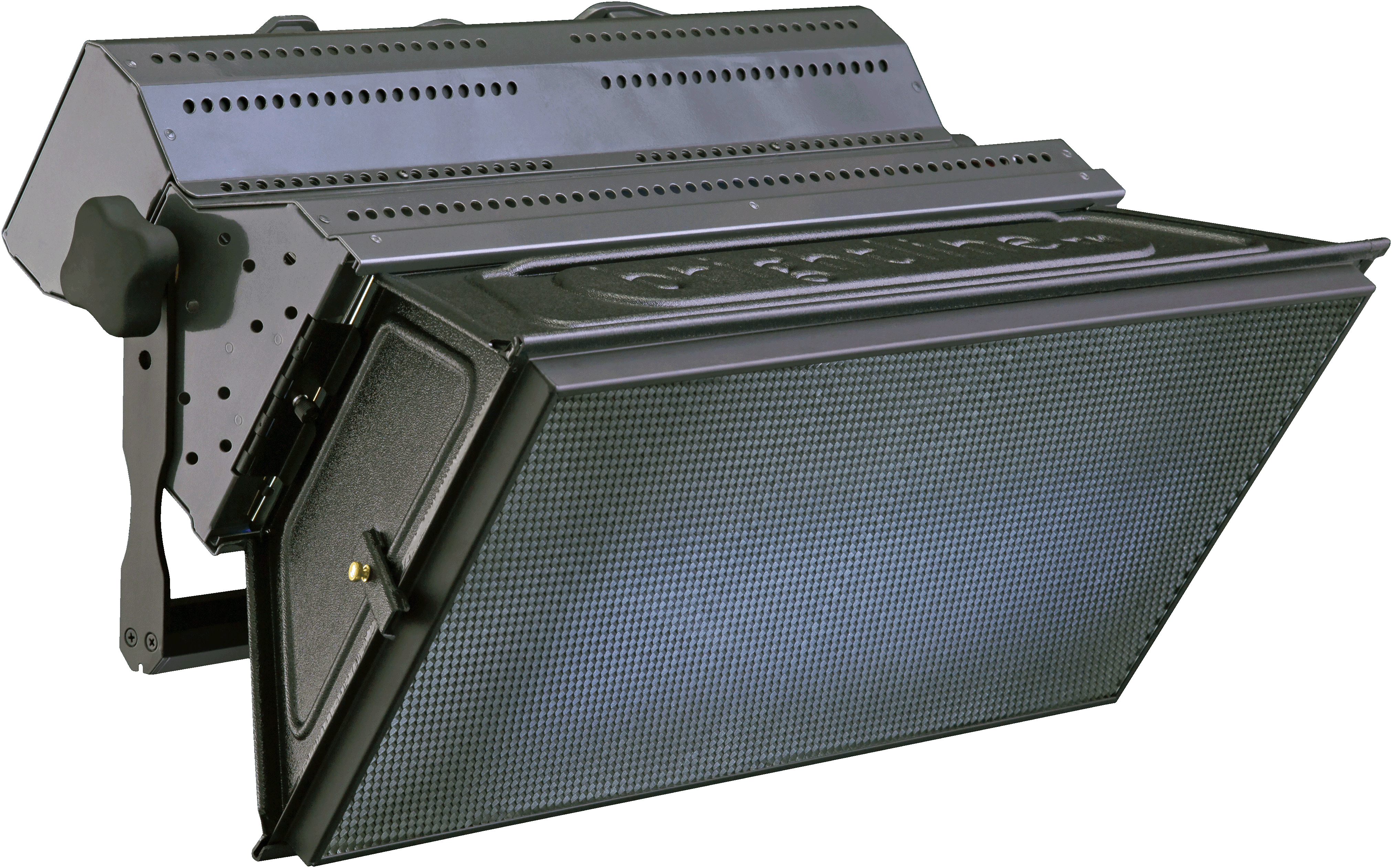Time’s Almost Up for Fluorescent Lighting
Studios should have a plan for the transition

Even though the transition to LED lighting is well under way, there are lots of TV stations that still depend on studio fluorescent lights. I know this, in part, because I helped put them up with their last news set. If you’re involved in providing lighting in a station that still uses fluorescent studio fixtures, this column is especially for you.
As discussed in earlier columns, there is an ongoing succession of lighting technology happening right now. Just as flame-based lighting gave way to incandescent lamps, fluorescent is now being replaced by LED—the difference is that few will wax nostalgic over the loss of fluorescent. Manufacturers have begun sounding the “last call” for lamp orders as we rapidly approach the final days of fluorescent lighting.
Fluorescent Had its Day
It wasn’t that long ago that fluorescent light was the most energy-efficient solution for many applications, including television lighting. It was well-suited to replace the earlier incandescent softlights. Hybrid lighting packages of incandescent Fresnels and fluorescent softlights used to be common pairing for lighting television studios. That was before LEDs became practical.
Ten years ago, it cost twice as much money to buy an LED version of a softlight, compared to a fluorescent fixture. Worse, the LED softlights were only half as bright as the fluorescent. The color fidelity was poor and the lumen-per-watt efficiency was worse than the fluorescent lights they were destined to replace. Today, all of those deficiencies are history. Today’s high-quality LED light fixtures are superior to fluorescent lights in every way.
Depending on where you live, you may have already purchased your last fluorescent tube as new laws roll out over the next year or two. Several state legislatures have already set the path to prohibit the sale of fluorescent lamps. By my reading of the California bill, the sale of nearly all fluorescent lamps will be prohibited beginning Jan. 1, 2024.
The European Commission has already announced that it will phase out general purpose fluorescent lighting across Europe in 2023. By international agreement, The Minamata Convention on Mercury, with 138 signatories, phases out fluorescent lamps by 2025.
For most purposes, fluorescent tube sales will stop by 2024. In other words, the end of fluorescent lighting is in sight. That’s actually a good thing. Not only will this transition save energy, but it will reduce a significant source of pollution in our environment.
In an era of long lead times and supply-chain challenges, you need to plan ahead."
Why such unanimous agreement on the elimination of this once celebrated lighting technology? It boils down to a poisonous drop inside of every tube: Mercury.
Now that we have a viable alternative light source, the phase-out of fluorescent tubes will help reduce exposure to this neurotoxin. This move will keep millions of metric tons of mercury pollution and CO2 out of our environment. It will also save consumers a trillion dollars in the energy costs through increased efficiency.
Exit Strategy
Still using fluorescent lights in your studio? Then you need an exit strategy now. If you’re still using fluorescent lighting, your studio should already be planning a path to replace them. You may have as little as a year left to complete this transition. While the cost of the new equipment can be substantial, the supporting infrastructure is actually simple by comparison to what was needed for incandescent.
The latest lighting fixtures require little more than non-dim power and a DMX data line. While specific details about adapting to this next generation of lights is beyond the scope of this column, the requirements are well known within the industry. This is no longer “cutting-edge” stuff.
In an era of long lead times and supply-chain challenges, you need to plan ahead. With a lot of stations trying to beat the clock on this, there could be a wait. For some fortunate facilities, there may be an easier route.
Possible Upgrade
I was optimistic when Osram briefly introduced an LED retrofit to replace a common type of studio fluorescent tube. Unfortunately, they discontinued it shortly after its introduction. It’s now clear that lamp manufacturers have lost interest in fluorescent lamps. Based on their current websites, they’ve already moved on.
There is, however, one upgrade solution that deserves special note. Brightline came up with an all-in-one retrofit package for their outdated S1.2 and S1.4 fluorescent fixtures. The LED upgrade kit is easy to install and costs a fraction of a
new fixture.

I admire that this company figured out how to extend the life of their legacy fixtures while maintaining exceptional performance. The upgraded light is fully DMX controllable, has an excellent 97 CRI (Color Rendering Index) at 5600K (daylight) color temperature, and all of their well-designed accessories still fit.
This is a great option if you’ve already got Brightline fluorescent fixtures in your lighting grid.
Taking this a step further, why not design more sustainable fixtures? Even a 50,000+ hour LED lifespan will eventually fade and lose color accuracy. When they finally fail, is it really necessary to replace the entire fixture? Why not just replace the light engine? The result would be less waste and greater user value.
Whatever new or renewed equipment you eventually choose, remember that fluorescent tubes are hazardous waste. The EPA encourages recycling of fluorescent lamps. Local regulation may well require it. You can find resources by Googling “how to recycle and dispose of fluorescent tubes.”
Inevitably, there will be another major advance in lighting technology that makes LEDs obsolete. Let’s hope the next lighting revolution is at least a few years away.
Get the TV Tech Newsletter
The professional video industry's #1 source for news, trends and product and tech information. Sign up below.
Bruce Aleksander is a lighting designer accomplished in multi-camera Television Production with distinguished awards in Lighting Design and videography. Adept and well-organized to deliver a multi-disciplined approach, yielding creative solutions to difficult problems.

